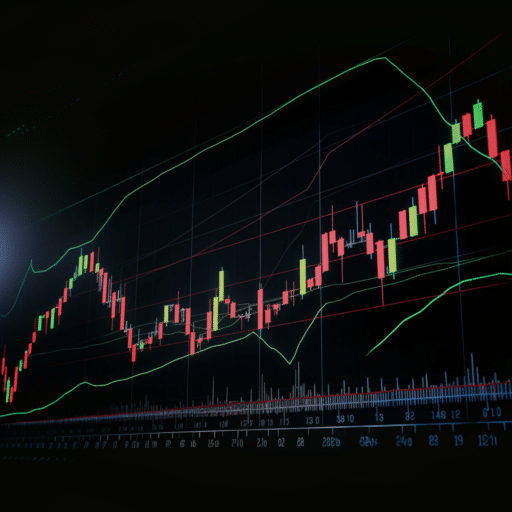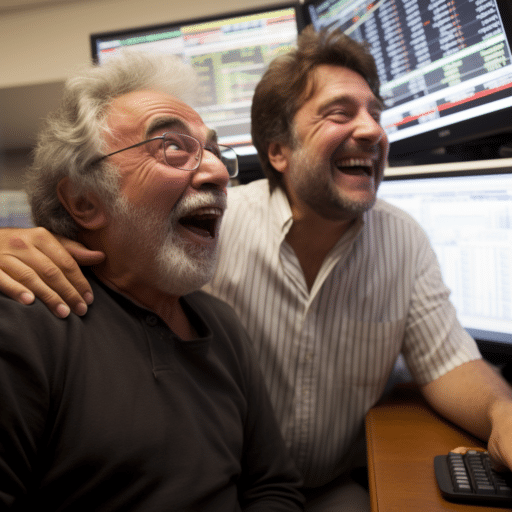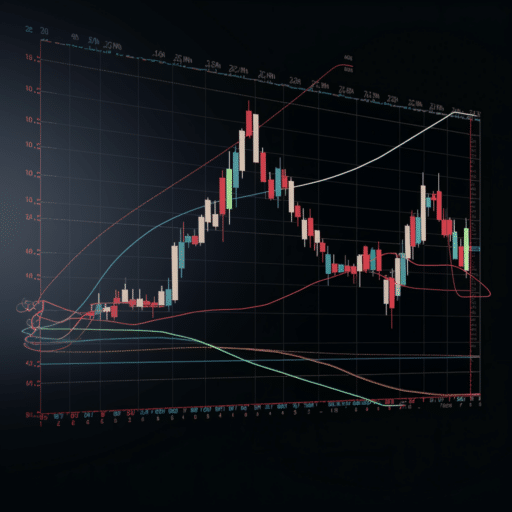Managed futures have become increasingly popular as a viable alternative investment strategy over the past three decades.
Most private and institutional investors already know their way around the most common types of investments.
Multiple generations of investors have relied on a mix of bonds, stocks, cash, and real estate to build their portfolios, which together store vast quantities of wealth around the world.
However, there are a number of other asset types and methods that can be used instead of these standard ones.
Hedge funds, infrastructure, and private equity make up the bulk of these non-conventional approaches.
For a well-rounded best infrastructure stocks portfolio, combining traditional holdings with managed futures can offer a strategic blend of stability and responsiveness to changing market dynamics.
Alternative investments, such as managed futures, are increasingly attractive to investors who want higher returns than those generated by more conventional assets and methods.
In private banking, diversifying portfolios through the inclusion of managed futures can enhance risk-adjusted returns and provide clients with exposure to alternative investments.
If you are looking to invest as an expat or high-net-worth individual, which is what I specialize in, you can email me (advice@adamfayed.com) or WhatsApp (+44-7393-450-837).
Table of Contents
What are Managed Futures?
The term “managed futures” pertains to an investing strategy in which a team of professionals actively manages a portfolio consisting of futures contracts.
Managed futures are widely regarded as an alternative investment vehicle, frequently employed by funds and institutional investors to achieve diversity in both portfolio and market contexts.

Managed futures enable portfolio diversity by providing exposure to other asset classes, hence aiding in the reduction of portfolio risk.
This diversification is not attainable through direct investments in stocks and bonds. Managed futures have a tendency to exhibit weak or inverse correlations with conventional stock and bond markets, rendering them suitable investments for diversifying a portfolio in accordance with modern portfolio theory.
Moreover, managed futures pertain to an industry that has been in existence for three decades, comprising proficient money managers recognized as commodity trading advisors (CTAs).
Commodity Trading Advisors (CTAs) are mandated to undergo registration with the Commodity Futures Trading Commission (CFTC) of the United States prior to their ability to present their services as financial managers to the general public.
CTAs are mandated to undergo an extensive background investigation conducted by the FBI and submit comprehensive disclosure paperwork.
Additionally, they are obligated to undergo annual independent audits of their financial accounts.
These documents and audits are subject to scrutiny by the National Futures Association (NFA), an autonomous regulatory entity responsible for overseeing the industry.
Investment funds seeking a balanced and dynamic approach may consider incorporating managed futures strategies to capitalize on market trends and navigate various economic conditions.
What is a Commodity Trading Advisor (CTA)?
Advisors in the field of managed futures are commonly referred to as CTAs, which stands for “commodity trading advisor.”
CTAs specialize in trading futures contracts rather than stocks, bonds, or a combination thereof that are typically traded by money managers and portfolio managers.
Using their own in-house trading algorithms, some CTAs handle the financial affairs of their clients.
Some people use organized, computer-driven mechanical processes, while others prefer more ad hoc approaches.
Futures contracts are traded on a variety of global exchanges, and managed futures programs frequently take long or short positions in these instruments.
Managed futures use a wide variety of methods and approaches.
However, a crucial shared factor among these managers is their employment of highly liquid, regulated, exchange-traded products and foreign exchange markets for trading purposes.
How Does Managed Futures Work?
In most cases, CTAs will manage their customers’ assets by employing either system-based trading strategies or discretionary trading strategies, both of which are exclusive to their line of work.
This may involve taking long or short positions in futures contracts across a variety of markets, such as metals, cereals, equity indices, soft commodities, foreign currency, and futures of U.S. government bonds.
As an alternative to conventional hedge funds, managed futures are attracting an increasing number of investors’ consideration.
Hedge fund investments are often utilized by funds and other types of institutional investors as a means of diversifying the traditional investment portfolios that are composed of large market cap equities and highly rated bonds.
One reason why hedge funds are a smart diversification bet is because they participate in the futures market.
However, this is only one reason. The development of managed futures in this market has made it possible for institutional investors to participate in a form of diversification that is more open and accessible.
What are the Types of Managed Futures?
The majority of the time, managed futures make use of a methodical investment strategy, however, there are occasions when discretionary trading tactics are implemented.
Discretionary trading is a sort of trading that relies on a manager’s experience and expertise within a particular market in order to make decisions on investments. These decisions are based on the manager’s discernment.
The prevalent systematic approach is primarily predicated on the application of technical analysis in order to evaluate the dynamics of the market, which might include shifts in price as well as variations in trading volume.
The trading process is dependent on the methodical execution of quantitative models that utilize moving averages, breakouts of price ranges, or other technical indicators to generate signals for buying and selling within a specified set of markets.
These models are used to provide buy and sell signals. The use of automation has expanded tremendously in recent years, particularly since the introduction of online trading platforms.
Price fluctuations are often seen by the vast majority of managed futures managers as the outcome of the interaction between the supply and demand dynamics associated with a particular commodity or financial instrument.
Because of the competition among various forces, the market is in a state of perpetual motion. This competition is driven by the goal of maximizing profits.
The goal of managed futures managers is to recognize the beginning of a trend, then take a position inside that trend, and then exit the trend once it has run its course.
Every day, adjustments can be made to the protective stops, and additional positions can be opened if the trends continue to be stable.
On the other hand, these positions can be rapidly reduced during times of difficulty or high volatility. It is possible to efficiently regulate the management of risk in regard to groups of interconnected markets and the portfolio as a whole.
Diversifying one’s customer base is one other method that can be utilized to lessen the impact of potential risks.
The employment of various trading systems or investing methods, such as systematic, arbitrage, and spread trading strategies, has the potential to yield benefits when applied to managed futures investments.
These benefits have the potential to be derived from managed futures investments. The regularity and duration of trading activity are two additional criteria that can be used to differentiate across investment strategies.
What are the Benefits of Managed Futures?
Managed futures are a popular choice among investors looking to diversify their holdings since they offer a range of potential returns.
The incorporation of managed futures into an investment portfolio has the potential to lower risk in the case of poor performance in equities as well as a levelling off of the gains generated by hedge funds, according to one school of thought.
This claim is backed up by a plethora of academic research that investigates the effects of investing in traditional asset classes in addition to alternative asset classes like managed futures, which are examples of conventional asset classes.

John Lintner, a well-known researcher from Harvard University, is highly acknowledged for his considerable contributions to the field of study in question.
As a result of these contributions, he is one of the researchers in this subject who is referred to the most frequently.
During the decade leading up to 2005, the alternative investment class of managed futures produced returns that were equivalent to those of other investment classes.
The managed futures market generated a compound average annual return of 6.9% between the years 1993 and 2002.
In comparison, the total return on investment for U.S. equities was 9.3%, as measured by the S&P 500 total return index; however, the return on investment for long-term U.S.
Treasury bonds were 9.5%, as assessed by the Lehman Brothers long-term Treasury bond index.
Drawdowns in equity, bond, and managed futures markets between January 1980 and May 2003 provided evidence that risk-adjusted returns exhibited superior performance.
This was demonstrated by the fact that equity, bond, and managed futures markets each experienced their own unique drawdowns.
Drawdowns are a term that is frequently used by CTAs (also known as commodity trading advisors), and they relate to the most significant drop in performance that a financial asset has ever seen.
During this particular time frame, managed futures encountered a maximum drawdown of -15.7%, in comparison to the Nasdaq Composite Index which encountered a decline of -75% and the S&P 500 stock index which encountered a fall of -44.7%.
Another advantage of managed futures is that they can help reduce risk by diversifying a portfolio. This is an important aspect of risk management.
Throughout the course of financial history, an unfavourable correlation has been found to exist between managed futures and several asset classes, including equities and bonds.
To phrase it another way, managed futures programs have a largely negative correlation with both equities and bonds. This is to say that they are inversely correlated.
During epochs that are marked by inflationary pressure, it is advisable to consider investing in managed futures programs that explicitly monitor the metals markets, such as gold and silver, or in foreign currency futures.
These types of investments can provide protection against price increases. This strategic approach can be an effective way of limiting the potential negative impact that inflationary conditions may have on equities and bonds.
It can serve in this capacity because it can serve as an effective method of mitigating risk. It is possible that certain managed futures programs might offer higher performance in the event that the performance of equities and bonds is mediocre as a result of rising anxieties regarding inflation.
This is because it is probable that specific managed futures programs could produce superior performance under the exact same market conditions.
Therefore, the incorporation of managed futures alongside these additional asset classes has the potential to make your investment capital allocation more effective.
What are the Risks of Managed Futures?
Managed futures came into being after the Commodity Futures Trading Commission Act was passed into law.
This act was essential in defining the roles and responsibilities of commodity trading advisers (CTAs) and commodity pool operators (CPOs). As a result, managed futures were able to be created.
The use of derivatives in varying degrees is one of the key differentiating factors between professional money managers and managers of stock market funds.
The majority of money managers, on the other hand, do not make extensive use of derivatives in their investment strategies.
CTAs and CPOs are regulated by the National Futures Association (NFA) and the Commodity Futures and Trading Commission (CFTC), respectively.
Both of these regulatory bodies are responsible for supervising the industry. These entities are responsible for carrying out audits and ensuring that quarterly reporting duties are met.
In comparison to hedge funds, the prevalence of strong industry regulations constitutes an additional aspect that contributes to the growing popularity of institutional investors for these investment products.
How to Invest in Managed Futures
Utilizing a managed-futures mutual fund or ETF is one potential option for adding managed futures to one’s investment portfolio in a way that is both convenient and financially efficient.
This can be accomplished in a number of different ways. Individuals have the chance to gain exposure to a broad portfolio of managed-futures assets by investing in funds.
This exposure is gained through the use of a single investment vehicle, which is made possible by investing in funds.
One does not have to have direct participation with fund management in order to make investment selections in order to easily achieve diversification in their portfolio.
The trading procedures that are utilized by managed-futures mutual funds and managed-futures ETFs are the major factors that set these two types of funds apart from one another. ETFs are traded on an exchange in a manner that is analogous to the trading of stocks.
In constructing a resilient investment portfolio, considering the inclusion of managed futures within the best financial ETFs can provide a dynamic hedge against market volatility and economic uncertainties.
When evaluating the best industrial stocks, investors should also explore managed futures to potentially mitigate risks and capture opportunities arising from global macroeconomic trends.
On the other hand, the prices of mutual funds are only decided and settled once a day, specifically after the closing period of each trading day.
ETFs have the additional benefit of possibly demonstrating more tax efficiency than other investment vehicles.
This is because the underlying investments that ETFs hold typically have lower turnover rates, which results in fewer instances of capital gains tax events occurring.
When evaluating managed futures funds or ETFs, it is absolutely necessary to pay close attention to the specific investments that have been made by the fund.

Examine the underlying investments to determine the industries that are included, and then evaluate whether or not they are aligned with your diversification needs, level of risk tolerance, and investment goals.
In addition to this, it is essential to take into mind the repercussions that this will have on your finances.
When contemplating the purchase of a mutual fund or exchange-traded fund (ETF), it is essential to place a high level of importance on the evaluation of the expense ratio, since this metric reflects the principal cost that is connected with these investment vehicles.
The expense ratio of a fund is the annual cost spent by the investor, expressed as a percentage of the fund’s total assets.
This ratio is also known as the expense ratio. Because lower expenditure ratios would lead to reduced fee payments, it is in everyone’s best interest to look for funds with those characteristics.
In the end, it is essential to conduct an analysis of the performance of the fund in order to acquire an in-depth comprehension of the returns it has delivered to its investors during past time periods.
It is essential to keep in mind that the returns on investments in the past are not always an accurate indicator of how an investment will perform in the future.
Final Thoughts
The majority of retail investors may not be familiar with the notion of managed futures.
Yet, it is a strategy that should be considered by those who want to increase the diversification of their investment portfolio.
Which line of action is going to be most beneficial? Prior to making a choice regarding any potential investments, such as managed futures, it is recommended to first perform an in-depth study on the benefits and drawbacks associated with the investments in question.
Historically, managed futures returns have shown little to no association with those of stock and bond markets.
This minimal correlation is expected to continue for the foreseeable future. The stock market suffers when there is economic and political unpredictability.
As a result, currency and energy price volatility occur, giving managed futures managers an excellent opportunity to profit.
Managed futures are a useful diversification tool since they provide access to a wide variety of international investment opportunities and can help reduce the overall return volatility of a portfolio.
An investor considering managed futures should do so with the understanding that it is essentially a long-term investment.
The manager’s track record, reputation, and years of experience in the managed futures industry should all be taken into account before committing funds.
Pained by financial indecision? Want to invest with Adam?

Adam is an internationally recognised author on financial matters, with over 760.2 million answer views on Quora.com, a widely sold book on Amazon, and a contributor on Forbes.



